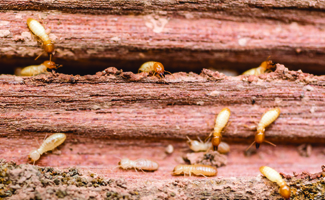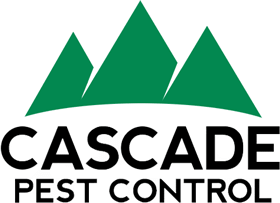Author: Kurt Treftz, Cascade Pest Control

How to Make Your Home a Less Appetizing Termite Target
One of the most important things to know about termites is that there are a number of different types, each with its own preferences. In the Seattle area, our termite pest control experts most frequently encounter subterranean termites and damp-wood termites. While both seek out the structure of homes and businesses, they do so in different ways. Understanding what attracts each type of termite is key to keeping your structure termite-free and avoiding the need for termite treatment.
Wood around the Home
Both damp-wood and subterranean termites seek out moist, exposed wood around the home, and wood doesn’t have to be part of a home’s structure to attract termites. Old stumps, fallen trees, stacks of firewood, and other types of miscellaneous wood around the home can all attract termites. Once they find a source of food close to your home or business, it’s usually only a matter of time before they try to move inside.
Structural Damage
In order to enter the home, termites seek out structural damage, especially in the foundation. Damp-wood termites, which establish colonies in the home’s structure, seek out structural damage and exposed wood to find an entry point. It likely comes as no surprise that damp-wood termites prefer to inhabit moist wood, which means areas with leaks and water damage are a big attraction.
Wood in Contact with the Ground
Subterranean termites do not establish colonies inside of the structure. Instead, they live underground in moist soil, and travel to the structure to feed. Any wood that is part of your home and also comes in contact with the ground is a prime source of food for subterranean termites. The will often establish mud-colored, pencil-width tubes along the foundation of the structure, in order to safely travel from their home underground to the source of food.
Moisture within the Structure
As a general rule, termites often target damaged portions of a structure. They need cracks in the foundation or wood in contact with the ground to find a foothold, and the termites common in the Seattle area prefer to feed on damp wood. Any source of moisture, whether it’s a roof leak, a damaged foundation, or even a dripping pipe, can create the type of environment were termites thrive. So keeping up with home maintenance and keeping a close eye out for any sources of moisture are keys to avoid attracting termites.
Professional Termite Control
While there is much that you can do to make your structure less attractive to termites, there’s no way to eliminate the risk of an infestation entirely short of a professional termite treatment. If you believe that your home or business has been infested by termites, then it’s time to consult with a termite pest control expert. Cascade termite control experts can help you spot the signs of an infestation, take the steps necessary for termite extermination, and point out potential trouble spots where termites could make a home in the future.
